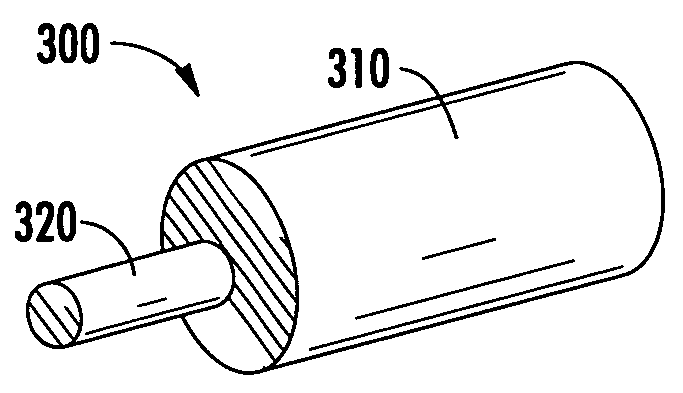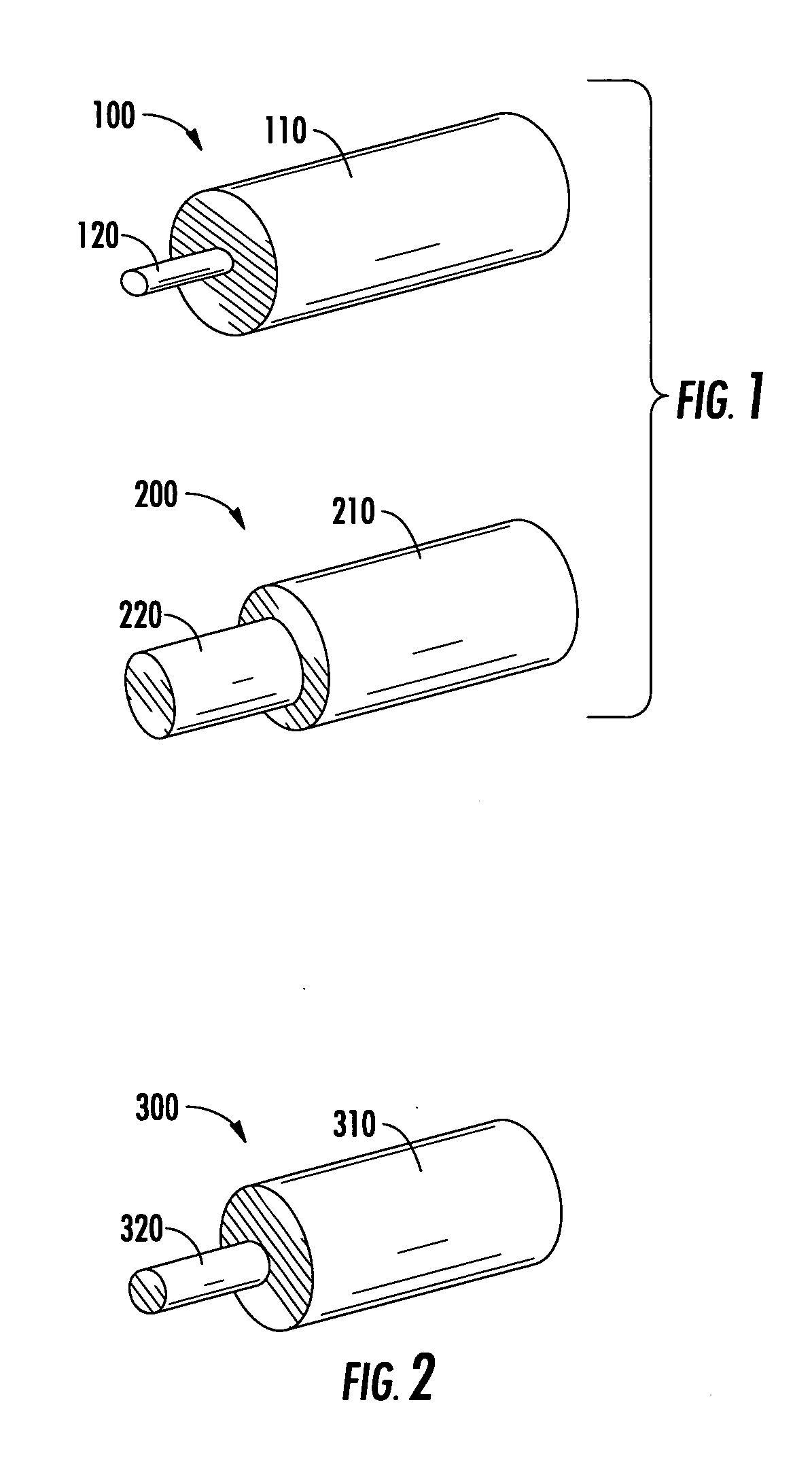Pure silica core multimode fiber sensoes for dts appications
- Summary
- Abstract
- Description
- Claims
- Application Information
AI Technical Summary
Benefits of technology
Problems solved by technology
Method used
Image
Examples
Embodiment Construction
[0020]The instant invention can best be understood by first reviewing some of the basic relationships occurring in multimodal fibers. The normalized frequency V in a multimodal fiber determines the total number of guided modes of a step index (SI) fiber and is defined as:
V=2πaλ·ncore2-ncladding2=2πaλ·NA(1)
where λ is the vacuum wavelength, a is the radius of the fiber core, and NA is the numerical aperture. When the V number is below 2.405, the fiber supports only one mode, categorized as a single mode SM fiber. Multimode fibers usually have higher V numbers.
[0021]Numerical aperture (NA) is also an important parameter of an optical fiber. Higher numerical aperture means greater acceptance angles for input light into the fiber. Thus, fiber-to-fiber splices exhibit lower loss, fiber-to-device coupling is more efficient, and fiber bending losses are lower.
[0022]Related to the normalized frequency is the number of supported modes N in a step index fiber, which for large V values can be a...
PUM
 Login to view more
Login to view more Abstract
Description
Claims
Application Information
 Login to view more
Login to view more - R&D Engineer
- R&D Manager
- IP Professional
- Industry Leading Data Capabilities
- Powerful AI technology
- Patent DNA Extraction
Browse by: Latest US Patents, China's latest patents, Technical Efficacy Thesaurus, Application Domain, Technology Topic.
© 2024 PatSnap. All rights reserved.Legal|Privacy policy|Modern Slavery Act Transparency Statement|Sitemap



